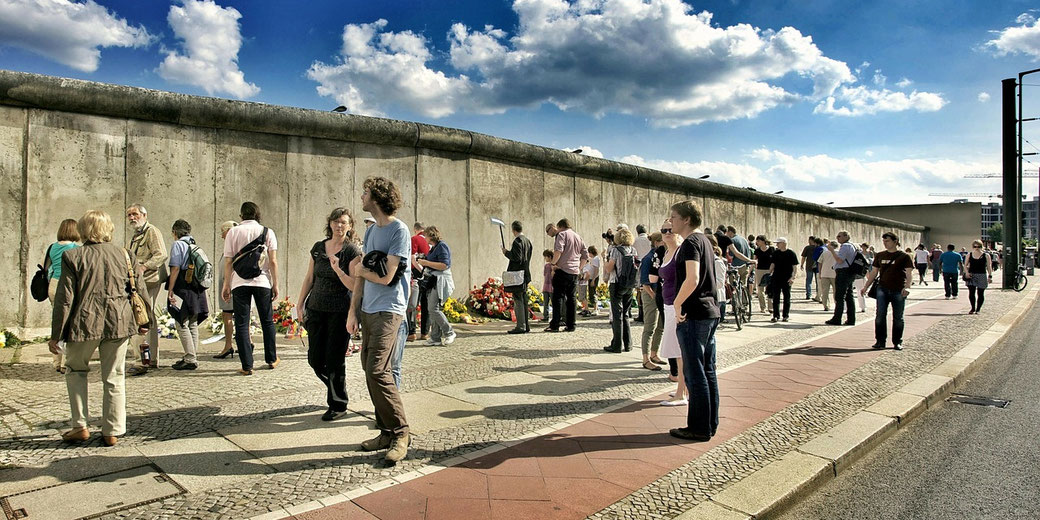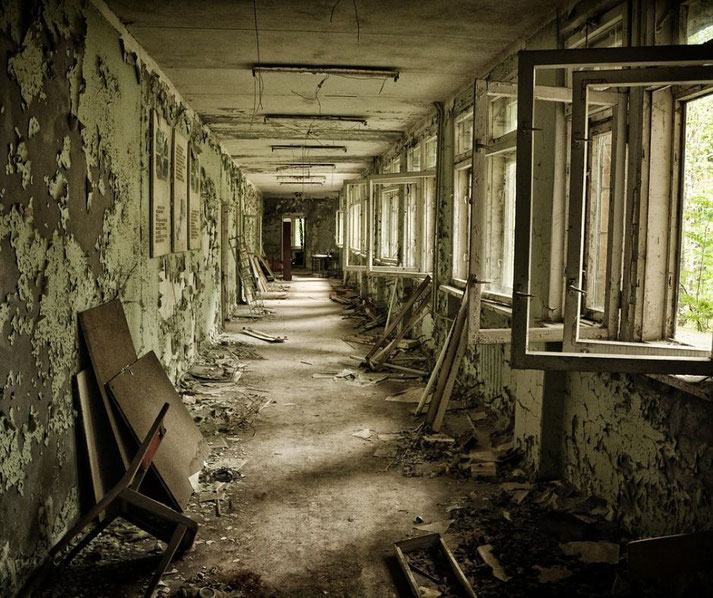What caused of the collapse of the Soviet Union?

The collapse of the Soviet Union was one of the most dramatic and important events of the late 20th century. It had been a global superpower and had engaged in a tense rivalry with the United States known as the Cold War.
However, in the 1980s, economic struggles, political reforms, and social unrest began to unravel the Soviet system.
During this period, a number of key figures and pivotal events accelerated the decline. Finally, in 1991, the Soviet Union collapsed entirely.
Here's how it happened:
The rise of the USSR
Emerging from the aftermath of the Russian Revolution in 1917, the Soviet Union was officially established in 1922.
Then, over the next 70 years, it became a dominant force on the global stage as more eastern European countries like Poland, Estonia, and Hungary joined the union.
In fact, it became one of the most formidable powers in history, as it controlled a territory inhabited by 290 million people and possessed a huge arsenal of nuclear weapons, which was second only to the United States.
However, despite its size and strength, the Soviet Union was held together more by strict military controls which routinely suppressed internal dissent.
As a result, this authoritarian approach made adaptability to major economic challenges very difficult.
The Soviet Economy
The Soviet economy was primarily centralized and planned. This meant that it was controlled mainly through the government and profits were spent on major government projects.
This is in comparison to a more open economic system, like America's, where individual companies could sell more freely and spent their profits as they liked.
One of the key weaknesses of the planned economy of the Soviet system was that it struggled with efficiency.
So, in 1964, General Secretary of the Communist Party Leonid Brezhnev introduced the concept of 'developed socialism', which emphasized industrial development.
This was meant to make the economy more open, while also keeping it still under the control of the government.
Unfortunately, this policy did not successfully address the production of consumer goods, which lead to chronic shortages in the 1980s.
As a result, many common people in the Soviet Union experienced increased poverty and less access to basic resources.
The spiraling costs of the Soviet military
Since the Soviet Union relied so heavily on its army to control its territories, it had to maintain a massive military force.
At its height, it had over five million active soldiers, which required billions of dollars to be spent on defense annually.
The ongoing Cold War arms race with the United States had drained the Soviet Union's resources, with defense spending reaching approximately 15-17% of the GDP in the 1980s.
Yet, despite the significant resources spent on them, the military faced growing issues of poor morale and had problems with outdated and inefficient equipment.
Ultimately, these issues would contribute to the Soviet leadership's inability to respond effectively to the spreading social unrest of the 1980s.
The initiatives of Mikhail Gorbachev
On March 11, 1985, Mikhail Gorbachev was elected General Secretary of the Communist Party of the Soviet Union.
Recognizing the need for change, Gorbachev tried to turn the tide of the Soviet Union's decline by initiating two major reforms, known as perestroika and glasnost.
Perestroika aimed to make the Soviet economy more efficient through restructuring, introducing elements of private ownership and market competition.
However, this transition led to rapid inflation and other economic difficulties, which caused even further hardship for many Soviet citizens.
In response, Gorbachev implemented glasnost: a policy of increased government transparency and openness to its citizens and the world
It was hoped that by doing this, the common people would be less likely to revolt, as it allowed for greater freedom of expression.
Unfortunately, these changes only stirred more social and political unrest. After been suppressed for so long, the people found the new freedoms to be an opportunity to finally vent their frustrations against the Soviet government.
Key leaders across many Soviet countries started openly criticizing the failures of the past and called for major changes, and even for the Soviet Union to be dissolved.
The Chernobyl Disaster
In the middle of the growing unrest and economic troubles, a massive nuclear catastrophe took place in one of the Soviet Union's most important countries.
In 1986, an explosive meltdown occurred at the Chernobyl nuclear power plant in Ukraine.
It was one of the worst nuclear disasters in history, as the explosion sent radioactive material into the air and spread across much of Europe.
The town of Chernobyl was abandoned, and the government struggled to contain the dangerous fallout from the disaster.
This event displayed to the world the Soviet Union's technological shortcomings, as it did not have the money or resources to respond effectively.
It was also seen as a sign that it no longer had the ability to effectively manage a major crisis.
So, by the late 1980s, the Soviet Union's economy was in dire straits. Growth rates plummeted and a significant portion of its budget was being spent on the military—up to 25% by some estimates.

Fall of the Berlin Wall
On June 12, 1987, US President Ronald Reagan visited Berlin, which had been divided between the democratic western half of the city and the Soviet eastern half by a massive wall.
During his visit, Reagan famously called for Gorbachev to 'tear down this wall' during a speech.
Over two years later, in November 1989, a series of large public protests in East Germany broke out that called for an end to Soviet control.
These protests were initially quashed by the Soviet-backed government, but it only led to more uprisings.
In the same month, parts of the Berlin Wall were suddenly torn down by massive crowds of the general public.
People used sledgehammers and machinery to break through the structure. Soviet soldiers on guard no longer stopped the people and people started fleeing from the Soviet eastern half into the west.
The fall of the Berlin Wall was a potent symbol of the Soviet Union's diminishing control over its satellite states in Eastern Europe.
It initiated a domino effect that saw an increasing number of Eastern European countries breaking away from Soviet influence over the next few months.
When, in December 1989, Mikhail Gorbachev and US President George H.W. Bush declared an end to the Cold War during the Malta Summit, it was seen by many countries as the time to declare their independence.
The explosion of independence movements
Following the dramatic events in the late 1980s, most of the Soviet-controlled countries in eastern Europe rose up to seize back control of their own governments.
In fact, there were over 1,500 clashes with Soviet forces recorded in 1990 alone.
For example, the Solidarity movement in Poland, led by Lech Wałęsa, gained significant momentum in the 1980s.
It ultimately led to semi-free elections in 1989, which was the beginning of the end of Communist rule in Poland.
In May 1989, Hungary began dismantling its border fence with Austria. This led to an exodus of East Germans fleeing from the Soviet sphere of influence.
Then, the Baltic states of Estonia, Latvia, and Lithuania made their declarations of independence in 1990 and 1991.
The August Coup in Russia
The rapid fragmentation of the Soviet Union alarmed the government in Moscow, Russia.
Some of them had supported the more open policies of Gorbachev, but some blamed him for the sudden rise in independent countries.
So, in 1991, a group of Communist hardliners attempted to remove Gorbachev from power in a coup and sought to return to a more military-styled Soviet power.
However, the coup failed, and while Gorbachev returned to power, his position was weakened.
This event revealed the deep divisions within the Soviet leadership and showed that there was a crisis enveloping the Soviet Union.
The failed August Coup simply hastening the end of Communist rule and the disintegration of the Soviet Union.
The final dissolution of the Soviet Union
On December 25, 1991, Gorbachev chose to resign as president of the Soviet Union.
The next day, on December 26, the Soviet Union was officially dissolved and replaced by the Commonwealth of Independent States.
This was a loose confederation of former Soviet republics.
With this final stage in the collapse of the Soviet Union, the Cold War was officially over, and it was hoped that it would usher in a new era of globalization and diplomacy.
What do you need help with?
Download ready-to-use digital learning resources
Copyright © History Skills 2014-2025.
Contact via email
With the exception of links to external sites, some historical sources and extracts from specific publications, all content on this website is copyrighted by History Skills. This content may not be copied, republished or redistributed without written permission from the website creator. Please use the Contact page to obtain relevant permission.





